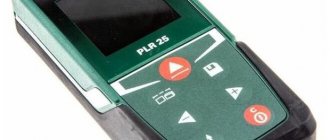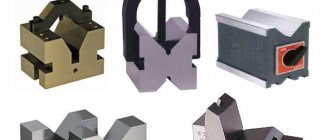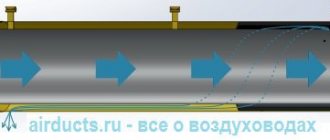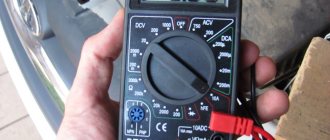In construction, mechanical engineering, agriculture, manufacturing and even in everyday life, for various reasons it is necessary to measure the humidity of gases and materials.
For these purposes, a moisture meter is used, as well as its popular subtype - a hygrometer.
The latter can be divided into many types, depending on the method of measuring humidity and various design features.
It is interesting that this is a device that is simple from a technical point of view, but extremely useful, and sometimes simply necessary from a practical point of view.
Thermometers
Thermometers can be divided into several types:
- by application and temperature range room thermometers - from 0°C to +50°C
- window thermometers - from -70°C to +50°C
- water thermometers - from 0°C to +50°C
- kitchen thermometers - from 0°C to 300°C
- sauna thermometers from 0°C to +140°C
- thermometer in the refrigerator or cellar -30°C to +50°C
- thermometers for gardeners
Liquid thermometers
- these are the ones that come with a capillary flask inside. The flask contains a liquid that expands when heated, but decreases in volume when cold.
The composition of such liquids most often is methylcarbitol (methyl alcohol - CH3(OCH2CH2)2OH), more popularly known as an “alcohol solution”. Sometimes kerosene is used as a filler. Both fillers are relatively safe compared to mercury.
Advantages:
- fairly fast response to temperature changes
- different degrees of accuracy : measuring steps from 0.5°C to 2°C
Flaws:
The glass from which the thermometer and its bulb/capillary are made can break if handled carelessly
Examples of room thermometers:
- Souvenir thermometers
- Decorative thermometers
Verification. GOST standards
Verification methods are regulated by GOSTs:
- 8.472-2013;
- 8.547-86;
- R 8.881-2015;
- 8.519-84;
- R 8.781-2012.
Technical specifications, requirements for coulometric type hygrometers in accordance with GOST R 8.758-2011.
GOST standards for test methods and general technical requirements:
- 21196-75;
- 29027-91.
Every year, hygrometers included in the State Register of SI and used in GROEI are verified without fail. Moreover, verification is carried out by bodies with special accreditation.
Each mechanical model should be calibrated (adjusted to the humidity of the environment with a known level) with a screw, usually included in the kit.
The quality of hygrometers is guaranteed by certificates of approval of the type of measurement system.
Mechanical thermometers
These are the following types of bimetallic thermometers:
- They work on the principle of “elastic deformation”: in a bimetallic thermometer there are 2 connected plates with different “linear expansion coefficients”, i.e. when the temperature changes in one direction or another (+ or -), this strip of metal bends and turns the calibrated arrow on the thermometer dial
- There are thermometers with a metal spring : the same principle - the spring diverges under the influence of temperature or, on the contrary, narrows. This causes the thermometer needle to move along the adjusted scale.
Advantages:
- all the same as liquid thermometers
- Durable housing: slight falls will not damage integrity or accuracy
Flaws:
the price is a little more expensive than liquid ones
Thermohygrometers and psychrometers
is simply a “thermometer + hygrometer” (relative air humidity meter) in one device.
How a thermometer works has already been described above - there is no difference in this case, but a hygrometer records relative humidity.
The only thing that is important to remember is that household hygrometers (both digital and “analog”) come with an error of ± 2-5% in estimating relative humidity. And for household purposes it is often more than enough. Only a psychrometer will provide accurate data on humidity - more on that below.
How a hygrometer, or more precisely, knowledge of relative air humidity, is useful to you:
First, let's look at the standards and SNIPs; the normal indicator of relative humidity in a room is considered to be from 45% to 60%
What to look for when choosing?
A hygrometer is not a very complicated device, so there are few parameters that you should pay attention to when purchasing.
Criterias of choice:
- Functionality . Decide what you need from the device. If you are only measuring the moisture content in the atmosphere, feel free to take a cheap mechanical one. If you want more, it is better to give preference to a multifunctional digital one.
- Range . It is desirable that the device has a wide measurement range. Otherwise, if there is very high humidity or dryness, the device simply will not be able to display the necessary data on the display or dial, as it will reach the measurement limit provided by the design.
- Price . Decide how much you are willing to pay for the device. As a rule, the price directly correlates with the functionality: the more bells and whistles a hygrometer has, the more expensive it is.
- Reviews . Some devices outright lie, showing incorrect data. To understand which model provides reliable data and which does not, read user reviews and expert reviews before purchasing. Of course, information about the error is also indicated in the technical documentation. However, this information is often unreliable and does not reflect the real situation.
Excess humidity or too dry air - what is dangerous?
- if 60-70% is exceeded, mold, fungi and subsequent colds, allergies, etc. can develop in the room. And then bronchial asthma and tuberculosis. This is especially important for the health of the child, and even more important for infants.
- at levels less than 30% it can negatively affect the condition of the skin and eyes . The nasopharynx and oral cavity, which are dry because of this, are the cause of upper respiratory tract diseases or the activation of chronic ones (bronchitis, asthma, pharyngitis).
Tip: How to make the air more humid?
The simplest, but not always possible, is to place a wet towel on a heated radiator battery . But it is better to use special air humidifiers for this.
Psychrometers
The measurement of air humidity in a psychrometer is calculated by the difference between the readings of two thermometers : dry and wet. Of course, the one that is wet is immersed in a small cap with water, which evaporates and regulates the readings of the “wet thermometer”.
Here are examples of popular psychrometers:
Psychrometric hygrometer Steklopribor VIT-1
Relative humidity measurement range depending on temperature: humidity, % from 20 to 90; temperature, °C +5…+25
650
Psychrometric hygrometer Steklopribor VIT-2
Relative humidity measurement range depending on temperature: humidity, % from 20 to 90; temperature, °C +26…+40
650
How to work with them is written on the page of the psychrometers themselves. In fact, you need some easy arithmetic and find the necessary parameters in the attached table: the difference in the readings of the wet and dry thermometers at the applied temperature gives the most accurate value of relative air humidity.
Who needs psychrometers:
- for those who want accurate temperature and humidity readings
- to those who saw that the readings of their digital or other “analog” hygrometer were “lying”
- to control the cultivation of plants sensitive to humidity
- for warehouses of food, furniture, etc., where compliance with the humidity regime is a guarantee of product safety.
- useful for kindergartens and other institutions where there is fundamental accuracy in accordance with GOST and SNiP.
Labeling requirements
The moisture meter according to GOST 26828 has a marking that informs:
- about the manufacturer's trademark;
- about the designation of the hygrometer;
- about the serial number;
- about the release date;
- about the sign of the State Register.
There are seals on moisture meters if they have passed transmission and reception tests.
Weather stations
Weather stations are a home digital device for complex indicators of temperature and humidity. Often, more advanced models also have a clock, alarm clock and barometric pressure indicators.
There are also weather stations that can provide short-term weather forecasts and display the history of readings for one of the measurements on the indicator: temperature, humidity, pressure.
There is also a feature: some types of weather stations to which you can connect 1 to 3-4 additional external sensors.
For example, - place one in another room (for example, in a child's room), - the second one outside, - and the third sensor is already built into the weather station itself. |
And watch 3 readings in order to get dressed in time to go outside, turn on the humidifier in the nursery or, conversely, the dehumidifier in the main room.
How to measure humidity?
The home atmosphere is tidied up using special humidifiers or dehumidifiers. However, in order to make these devices work as efficiently as possible and not cause further harm, you will first need to measure the level of moisture content in the surrounding air. For this purpose, devices called household hygrometers are used.
All hygrometers can be divided into two large groups.
- Mechanical . They are distinguished by reliability and low price. They serve for a long time. However, they have one drawback - not very accurate readings. The principle of operation is to measure the weight of water collected from the air over a certain time (it condenses in special curved tubes). The measurement result is displayed on a clock-like dial.
- Digital . This category of devices is more expensive and less reliable. However, it is distinguished by its extraordinary ease of use and the almost complete absence of errors in the readings. Digital hygrometers receive information about the water content in the atmosphere from a special electronic sensor. After this, the information is processed and displayed on the liquid crystal screen of the device. They often combine a hygrometer, thermometer, barometer and some other devices.
Expert opinion
Borodina Galina Valerievna
There are also so-called contact hygrometers. They are used to measure the moisture level in the plant substrate, as well as in various surfaces (for example, plaster or parquet boards). They are not suitable for measurements in everyday, home conditions.
Kitchen thermometers
This is a separate category of thermometers for measuring either the temperature of meat (or any other product), or for measuring the temperature of the oven, or both.
For a “temperature probe,” which is what they most often prefer to call such thermometers, the technology is simple - a bimetallic element, which is a temperature indicator. Some models have designated types of meat being cooked: chicken, pig, cow, which often makes it easier to understand the set temperature, what kind of meat and when it will be ready:











